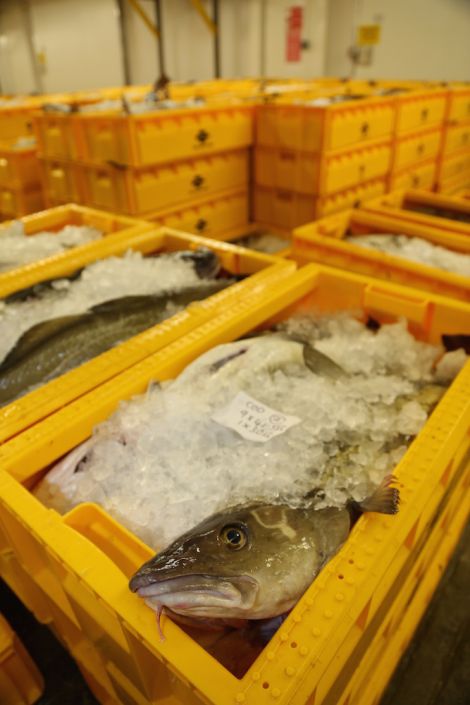News / Auction system helps whitefish landings to double
THE VALUE and quantity of whitefish landed in Shetland has substantially increased since the introduction of the isles’ electronic auction system in 2003, a new report has found.
According to figures released by the NAFC Marine Centre, the value has quadrupled and the quantity more than doubled since the electronic system was implemented.
The centre’s Dr Ian Napier has reviewed statistics on landings of whitefish in Shetland over the last 40 years.
The computerised auction system is used to sell whitefish – which includes species such as haddock, cod, whiting and ling – at markets in Lerwick and Scalloway, but it allows buyers to bid from elsewhere in the world.
The introduction of the electronic auction was accompanied by a push from organisations like Lerwick Port Authority and Shetland Islands Council to promote the isles’ markets to fishing boats from Scotland and to fish buyers outside of Shetland.
Napier’s research concluded that the weight of whitefish landed in Shetland rose to a peak in the mid-1980s before falling by 63 per cent from 1987 to 2003.
But by 2016 the weight of landings was restored to 20,000 tonnes, while the value was around £34 million.
The average unit price of whitefish landed in Shetland increased by almost two thirds in the decade after the introduction of the electronic auction, compared to a nine per cent increase in the decade before.
The composition of whitefish landings meanwhile has varied in recent years, partly due to the introduction of more powerful trawlers which can work over rougher sea beds and in deeper water.
A reliance on haddock and whiting in the 1980s has dissipated, with monkfish among the species landed more frequently today.
The quantity of whitefish in Scotland being landed locally has also increased over the last few decades, with 14 per cent (in weight) being landed in Shetland last year, compared to six per cent before 2003.
Become a member of Shetland News
In contrast, landings in Peterhead and across Scotland as a whole have remained less than half of what they were in the 1980s.
Napier commented: “After peaking in the mid 1980s, whitefish landings fell steadily and by 2003 were only about one third of what they had been in 1987. After 2003 – the year that the electronic auction was introduced – landings increased rapidly and had more than doubled by 2016.
“These results suggest that the introduction of the electronic auction in 2003, and the associated efforts to promote Shetland’s fish markets, had a substantial positive effect on whitefish landings in the islands.”
Shetland Fishermen’s Association executive officer Simon Collins said the auction system has in turn led to investment in the sector.
“The electronic auction has been a huge success for the whitefish industry in Shetland, ensuring that prices have held up well against a backdrop of strongly recovering fish stocks,” he said.
“That means jobs, income and investment for the future in what remains the most important sector of the economy in these islands.”
Become a member of Shetland News
Shetland News is asking its many readers to consider paying for membership to get additional features and services: -
- Remove non-local ads;
- Bookmark posts to read later;
- Exclusive curated weekly newsletter;
- Hide membership messages;
- Comments open for discussion.
If you appreciate what we do and feel strongly about impartial local journalism, then please become a member of Shetland News by either making a single payment, or setting up a monthly, quarterly or yearly subscription.




























































